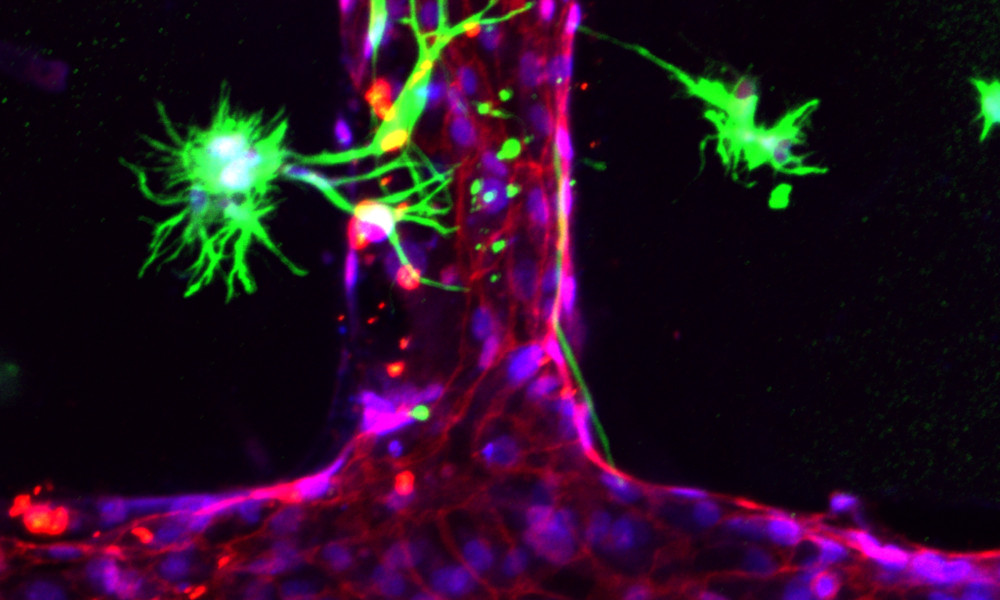
Understanding malaria

Cerebral malaria is a severe type of malaria that affects the brain. It causes around 400 000 deaths each year, most of them in Sub-Saharan Africa and in children under five years old. To help understand – and ultimately to fight – this disease, EMBL researchers from the Bernabeu group at EMBL Barcelona have created in vitro engineered networks of human blood vessels. One such network can be seen in this Picture of the Week, where blood vessels appear in red and blue, and brain cells in green.
Such pre-patterned in vitro vascular engineered model networks are composed of a collagen matrix crossed by open tubular networks. While refining the pre-patterned network, the researchers have control over blood vessel diameter, the number of branches, and flow conditions.
The collagen matrix supports the growth of many cell types, like astrocytes – a type of brain cell (green). Endothelial cells (red) are seeded through the microfluidic network. After a couple of days in culture, they form a homogeneous layer that lines the insides of the engineered channels. After several days, the ends of the astrocytes’ branches – known as endfeet – extend around the blood vessels.
Using such networks, members of the Bernabeu group want to recreate barrier properties found in the human blood–brain barrier. Once the model is developed, the scientists will be able to study how malaria parasites cause cerebral malaria.
Credit: Bernabeu Group/EMBL
If you have a stunning picture of your science, your lab or your site, you can submit it here.


